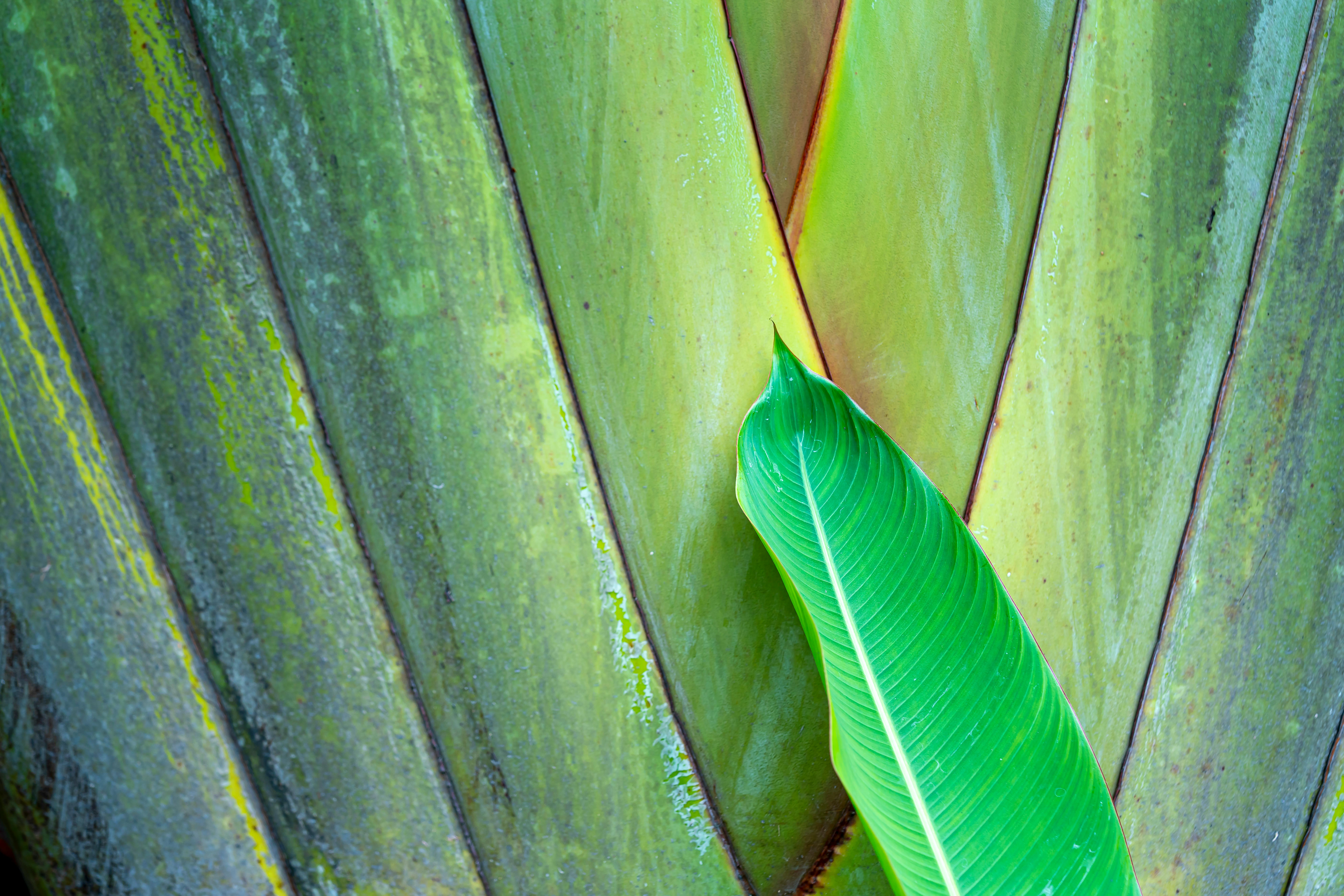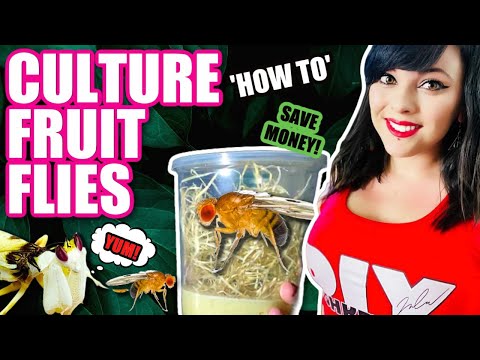Fruit fly cultures are a great way to observe and study the behavior of these insects. However, it is important to know how long a fruit fly culture can last before it becomes unsuitable for research and observation. This article will provide an overview of the lifespan of fruit fly cultures, including factors that can influence their longevity and how to ensure the health of your culture.The life span of a fruit fly is typically 40 to 50 days.
Making a Fruit Fly Culture
Fruit flies are a common pest found in homes and gardens, but they can also be a helpful tool for science. A fruit fly culture is an essential tool for researchers studying genetics and biology, as it allows them to observe the behavior of these tiny insects in controlled conditions. Creating a fruit fly culture is relatively simple and requires only a few basic supplies.
The first step in creating a successful fruit fly culture is to gather the necessary supplies. You will need a container with lid, such as a canning jar or plastic deli container, some fruit flies, and food for the flies such as applesauce or mashed banana. You will also need some cotton balls for the flies to lay their eggs on.
Once you have all of your supplies ready, you can begin creating your fruit fly culture. Start by adding some of the food to the bottom of the container and then place some cotton balls on top of it. Next, add the fruit flies to the container by lightly shaking them from their original container into your new one. Make sure that all of the flies are inside before securing the lid.
The next step is to ensure that your culture has optimal conditions for growth and reproduction. Fruit fly cultures require temperatures between 65-80 degrees Fahrenheit, so make sure that your room temperature is within this range. Additionally, you will need to mist the inside of your container every two days with water to keep it moist.
Finally, you will need to monitor your culture regularly for signs of activity such as egg laying or mating behavior. If you notice any signs of activity, you can transfer some of these eggs onto new cotton balls in order to start a new generation of fruit flies in your culture.
Creating a successful fruit fly culture requires patience and dedication but it’s well worth the effort. With time and care, you can create an environment where these tiny insects can thrive and be used for scientific research purposes!
Increasing the Lifespan of a Fruit Fly Culture
Fruit flies are one of the most common insects used in laboratories and classrooms to study genetics and evolution. Keeping a healthy culture of fruit flies can be challenging, but there are some simple steps that can help increase their lifespan.
The most important thing to remember when keeping a fruit fly culture is to keep it clean. Fruit flies are very sensitive to changes in their environment, so it is essential to keep their enclosure clean and free from debris and food particles. Keeping the area free from dust and dirt will also help reduce the number of pathogens that may be present.
It is also important to provide adequate nutrition for your fruit fly culture. A good diet should include a variety of different foods, including fresh fruits and vegetables, as well as other protein sources such as eggs or meat. It is also important to make sure that your cultures have access to plenty of water, as this will help them stay hydrated and healthy.
Finally, providing adequate space for your fruit fly cultures is essential for their longevity. Make sure that the enclosure you use has enough room for all of the flies, and that there is enough air circulation throughout the space. This will ensure that they have plenty of room to move around without becoming overcrowded or stressed out.
By following these simple steps, you can help ensure that your fruit fly cultures live long and productive lives in your laboratory or classroom setting. Taking good care of your cultures will not only increase their lifespan but also make them more enjoyable to work with.
Temperature
Creating a successful fruit fly culture requires the right temperature. Fruit flies thrive best in a warm environment between 68 to 86 degrees Fahrenheit (20 to 30 degrees Celsius). If the temperatures in the culture are too cold, the flies may not reproduce or develop properly. Temperatures that are too hot can also be detrimental to the health of the flies. Therefore, it is important to maintain temperatures within this range for optimal growth and reproduction.
Humidity
Fruit flies also need optimal humidity levels in order to survive and reproduce. The ideal humidity levels should be between 60 to 70 percent. Humidity levels that are too low can cause dehydration in the flies, while levels that are too high can lead to mold and fungal growth, which can be hazardous for the flies’ health. Therefore, it is important to maintain proper humidity levels in order for your fruit fly culture to be successful.
Food and Water
Fruit flies need a constant supply of food and water in order for them to thrive and reproduce. The ideal food source for fruit fly cultures is a mixture of yeast, sugar, and water. This combination provides essential nutrients for the development of healthy larvae and adults. Additionally, it is important that you provide fresh water on a regular basis since this helps ensure proper hydration of the flies. Without these two components, your fruit fly culture will not survive.
Containers
The type of container you use for your fruit fly culture is also an important factor in its success. It is best if you use containers with wide openings so that air circulation is maximized and there is ample space for the flies to move around. Additionally, these containers should have some form of screening on top so that they are well-ventilated but still secure enough to prevent any escapees from getting out.
Sanitation
Good sanitation practices are essential when it comes to maintaining a successful fruit fly culture. You should avoid overcrowding as this can lead to higher rates of disease among your colonies. Additionally, it is important that you clean out any dead or diseased individuals on a regular basis as this helps ensure that disease does not spread throughout your culture.How to Maintain a Fruit Fly Culture
Maintaining a fruit fly culture is not difficult but does require consistency and attention to detail. The first step is to obtain the appropriate materials. You will need a container for the culture, such as a glass jar or plastic box, food for the flies, and something to provide oxygen such as cotton balls or paper towels. Once you have all of the necessary materials you can begin preparing the culture.
Start by adding a few tablespoons of food to the bottom of your container. This could be any type of fruit or vegetable, such as apples, bananas, carrots, etc., that has been diced into small pieces. Add enough water so that it covers the bottom of the container about an inch deep. Place some cotton balls or paper towels on top of the food and water mixture in order to provide oxygen for the flies.
Next you will need to add some fruit fly eggs or larvae into the culture. This can be done by purchasing them from a laboratory supply company or by collecting them from fruits and vegetables that contain them naturally. Once you have added these eggs or larvae into your culture they will begin to hatch and develop into adult flies within a few days.
Once your fruit fly culture has been established you will need to maintain it in order for it to stay healthy and productive. It is important to keep the temperature and humidity at optimal levels for proper development and egg production. You should also make sure to feed your flies regularly with fresh fruits and vegetables every few days in order to keep them well-nourished. Finally, make sure that there are no leaks or holes in your culture container so that no outside contaminants can enter and disrupt your culture’s delicate balance.
By following these steps you should be able to successfully maintain a healthy fruit fly culture for many years with minimal effort on your part!

What Can Affect the Lifespan of a Fruit Fly Culture?
The lifespan of a fruit fly culture can be affected by a variety of factors. Temperature, environment, food availability, and genetic makeup are all important considerations when it comes to maintaining a healthy culture.
Temperature plays an important role in the longevity of a fruit fly colony. Too hot or too cold temperatures can cause stress to the insects, reducing their lifespan. Fruit fly cultures should be kept at room temperature, between 60-85 degrees Fahrenheit (15-29 degrees Celsius).
The environment in which the fruit fly culture is kept also affects its lifespan. A healthy environment should be free from dust and other contaminants that may harm the insects. It’s important to keep the area clean and well-ventilated to ensure the flies remain healthy.
Food availability is another key factor that affects the lifespan of a fruit fly culture. If there is not enough food available for the insects, they will become stressed and die prematurely. It’s important to provide an adequate supply of food for the flies by using fresh fruits or vegetables as bait on a regular basis.
Finally, genetic makeup can also impact the lifespan of a fruit fly culture. Some strains of fruit flies are more resilient than others and may live longer than others under similar conditions. It’s important to research different strains before purchasing them for your colony so you know which ones will have longer lifespans.
In conclusion, temperature, environment, food availability, and genetic makeup are all factors that can affect the lifespan of a fruit fly culture. By taking these considerations into account when setting up your colony, you can ensure that your flies will live longer and healthier lives.
How to Tell if a Fruit Fly Culture is No Longer Viable
Fruit flies are one of the most commonly used organisms in scientific research, and understanding how to maintain a healthy culture of fruit flies is essential for successful experimentation. Knowing when a culture is no longer viable, however, can be tricky. There are several telltale signs that a fruit fly culture has reached the end of its life cycle and needs to be replaced.
The most obvious indicator that a fruit fly culture has become too old is the presence of dead flies. If there are more dead flies than living flies in the culture, it is time to start a new one. In addition, if you notice fewer eggs being laid or see that the eggs are not hatching, this could also be an indication that your culture is reaching the end of its viability.
Another way to tell if your fruit fly culture is no longer viable is by examining the food supply. If you see mold or other discoloration on the food source, this could be an indication that it has gone bad and needs to be replaced. Additionally, if there are more adults than larvae present in your culture then this could also indicate that it needs to be changed out soon.
Finally, if you have had your fruit fly culture for an extended period of time without replacing it then it could also mean that it has become too old and needs to be changed out soon. A good rule of thumb is to replace your cultures every 2-3 weeks in order to ensure optimal health and longevity for your experiment’s results.
By keeping an eye out for these signs, you can easily tell when a fruit fly culture has reached its lifespan and needs to be replaced with a fresh one. Understanding how long a given culture will last can make sure your experiments yield accurate results and help ensure that they go as smoothly as possible.
How Long Do Other Insect Cultures Last?
Insect cultures are short-lived, typically lasting only a few weeks or months. The majority of the species have a single generation that lives for a few weeks and then dies off. This is because insects reproduce rapidly and have short lifespans. For example, flies only live for around two weeks, while mosquitoes live for about one month.
Other insect cultures can last longer depending on the species involved and the environment they are living in. Some species of ants or bees can create complex societies that can last for generations. These societies can last up to several years if conditions are favourable and they are well adapted to their environment.
In other cases, insect cultures may be seasonal or even have an annual cycle. This is common among migratory species such as monarch butterflies which travel long distances each year in search of food sources and nesting sites. Insects such as locusts may also form huge swarms that move around from place to place in search of food sources and favorable environments, but these swarms usually only last for a few months before dispersing again.
In some cases, insect cultures can exist for centuries if conditions remain favourable and they remain undisturbed by external factors such as human activities or natural disasters. This is especially true for social insects such as ants and termites which can build complex homes that last for centuries if not disrupted by humans or natural disasters.
Overall, the lifespan of an insect culture varies greatly depending on the species involved and the environment they are living in; however, most insect cultures last only a few weeks or months due to their short lifespans and rapid reproduction rates.

Conclusion
Fruit fly cultures can last an extended period of time if maintained properly. The main factors that determine how long a fruit fly culture will last are the quality of the food, the temperature, and the size of the culture. If these conditions are maintained, a fruit fly culture can last for many weeks or even months. It is important to monitor the health of your cultures and remove any dead flies or eggs when they are noticed. With proper care and maintenance, a fruit fly culture can provide a fascinating look into the world of genetics and evolution for an extended period of time.
Ultimately, how long a fruit fly culture will last depends on both its environment and its caretaker. With patience and attention to detail, you can maintain your fruit fly cultures for weeks or months at a time while learning more about genetics and evolution in the process.



